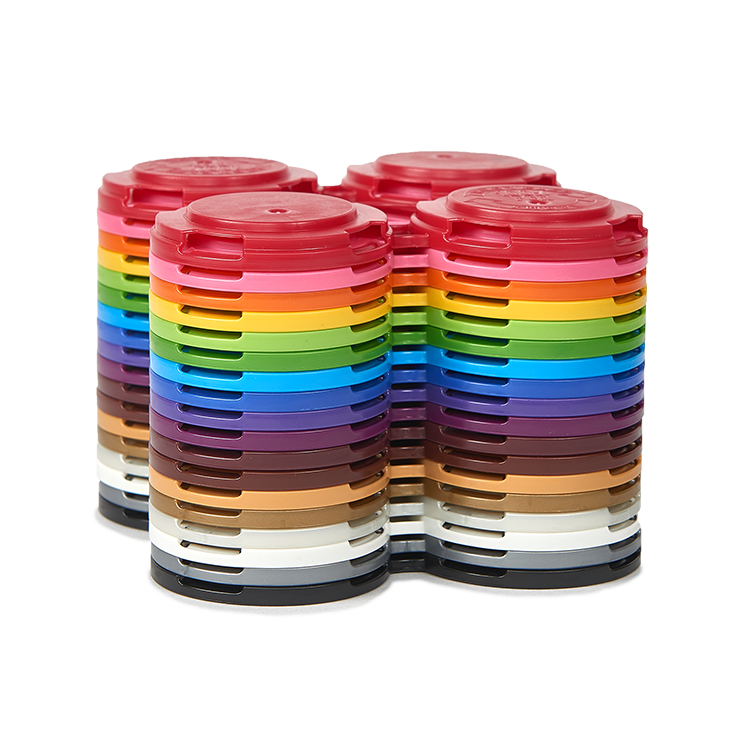What’s More Sustainable: Glass, Plastic, or Aluminum?
The data is clear, aluminum cans outperform glass, plastic, and other packaging in both in consumer preference and sustainability. People like that cans are more convenient and portable, not to mention more eco-friendly and protective...
The data is clear when it comes to consumer preference, people generally like aluminum cans better than plastic or glass. They like that cans are more convenient, protective of the beverage, and portable.
But more than ever, consumers want to make the environmentally conscious choice when selecting a beverage container. For many, that might mean they’ll opt for a glass bottle instead of a plastic one, due to the sustainability of glass.
Though glass is significantly more sustainable than plastic, it is far from the best environmental choice of the major beverage packaging options. Aluminum cans are far and away the most sustainable and environmentally friendly choice. Not only are they more recyclable, they are also more often made of recycled materials.
In this piece we’re going to break down some of the most common can packaging options like glass, plastic bottles aka PETs (Polyethylene terephthalate), aluminum cans, and other alternatives. We’ll also break down some of the innovative ways that aluminum cans are more and more being used to hold premium liquids beyond just the traditional beer and soda.
Recyclable vs Recycled
Before we start our breakdown, we need to define two key terms. We’ll be talking about each material and whether that material is recycled or recyclable (or both).
What exactly do those terms mean in this case?
Recyclable - these are items that can be recycled, as in, you can put them in a recycling bin and they will be turned into a recycled item.
Recycled - these are items that were placed into a recycling bin and then went through the process to be turned into a new item. So a “recycled” beverage package is made from a previous item of the same material
For each packaging option we’ll discuss if it is recyclable and/or recycled, as well as the sustainability of the recycling process for each.
Glass
Many consumers like glass bottles because they are more durable than plastic containers, preserve flavor for long periods of time, and keep beverages colder than plastic.
But how sustainable is glass?
Collection Rate
Recycled by Consumers
51%
The other 49% ends up in landfills, or worse, our environment and oceans.
Infinite Recycling Uses
Turned Into Recycled Items
20%
The other 31% are lost/sorted out in collection, or used for non-recycled uses such as roads and insulation.
Compared to plastic and other beverage containers like Tetra Pak, glass bottles are a smart choice. However, there are some other negatives, beyond the fact that nearly half of glass bottles are not recycled. Glass creates a much larger environmental footprint than other materials when created from scratch. It is also significantly heavier than plastic or aluminum, making transport much harder and more expensive.
Though glass isn’t as sustainable as many believe, it is still a great option compared to PETs.
PETs (Plastics)
PETs are extremely common, especially in the United States, but they are significant problems for the environment. As they age they break down into microplastics that get into the soil and water. They also provide for a flimsier package compared to glass and aluminum. Many falsely believe that using a PET bottle is acceptable because they are recyclable, but is that true?
Collection Rate
Recycled by Consumers
61%
The other 39% ends up in landfills, or worse, our environment and oceans.
Infinite Recycling Uses
Turned Into Recycled Items
8%
The other 53% are lost/sorted out in collection, or used for non-recycled uses such as clothing and electronics.
So, 92% of PET bottles that are created are not part of a truly sustainable process. Either they are lost (to a landfill or litter) or they’re recycled into a non-recyclable item. Couple this with the fact that plastic contributes negatively to the environment via microplastics, and it’s clear that PETs are a poor choice for environmental sustainability.
Aluminum
Aluminum cans are ubiquitous for beverages like beer and soda, and they are becoming more common for other types of liquids. Consumers enjoy the grab-and-go nature of an aluminum can, often preferring to take canned drinks out to the lake or on the golf course. But how environmentally friendly are these cans?
Though no packaging option is perfectly sustainable for the environment, aluminum cans are by far the best choice when it comes to recyclability.
Nearly 80% of aluminum cans are recycled by consumers. Additional aluminum cans have a closed loop recycling rate of 33%.
This means more than two out of every three cans are recycled by consumers. One one out of three cans is back on the shelf in as little as 60 days and the other gets recycled into other highly recyclable products.
Collection Rate
Recycled by Consumers
79%
The other 21% end up in landfills, or worse, our environment and oceans.
Infinite Recycling Uses
Turned Into Recycled Items
69%
Only 10% are lost/sorted out in collection, or used for non-recycled uses such as deoxidation for steel, powder and paste.
Cans are both the most recycled and the most recyclable of the three major drink packages. But there are other options on the market that consumers might be considering. Are these better than cans? Are they made of more recycled materials or more recyclable?
Tetra Pak (and other similar packages)
You’ve likely seen a Tetra Pak carton, but didn’t know that’s what it was called. These are the drink packages that feel and look like cardboard. Everything from nut milk cartons to water to juices to frozen items are contained in these packages. There are other, similar products to Tetra Pak in use, but Tetra Pak is by far the dominant player in this space.
Tetra Paks seem like they would be recyclable. Cardboard is one of the most recycled materials in use. However, there’s a major problem: all Tetra Paks have a layer of polyethylene, aka plastic. Which, of course, makes sense, have you ever tried putting liquid in unlined cardboard? It’s not a great idea.
Separating this layer of plastic from the packaging is an intensive process. Instead of the simple process that takes glass or aluminum from the recycling bin back to the shelf within a few weeks, the Tetra Pak recycling process involves shipping the cartons to Mexico where a complicated process turns them into things like concrete.
It’s not exactly as “eco-friendly” as you might think when you toss the “cardboard” container into the bin.
What about liquids that can’t be held in aluminum?
By now it’s been well-established that aluminum cans are the most effective liquid packaging for eco-friendly consumers and businesses. But, certain liquids have traditionally not been able to be packaged into aluminum cans. We call these liquids “hard to hold” beverages.
Liquids like:
- High acidity - Ready-to-drink cocktails, juices, and certain types of acids are known to eat through small flaws in the sprayed-on aluminum can lining, resulting in liner degradation and can corrosion.
- High sodium - Sodium chloride is the most corrosive ingredient to aluminum cans. This means that for standard aluminum cans, electrolyte-dense hydration drinks simply aren’t containable; they corrode the inside lining of an aluminum can and eventually leak out.
- Sulfites - Beverages like wine and cider which contain sulfites are prone to reactions occurring in the can due inconsistencies in the liner allowing for exposure to the raw aluminum can wall. Aluminum + sulfur dioxide = hydrogen sulfide. Anyone feel like consuming a drink that smells like rotten eggs simply because an insufficient can liner caused an off putting reaction?
- Cannabevs (scalping) – Cannabis drinks, known as “cannabevs” can suffer from “scalping” by the inside lining of the aluminum can. This means that cannabinoid with the beverage get absorbed by the liner before the consumer can enjoy the beverage, which lessens the potency and delivers a less-than-satisfactory experience.
These beverages are becoming more popular and many drink companies are interested in creating innovative new drinks for the curious consumer. However, they hesitate to do so. Up until now, the only option for these drinks would be packaging in glass, which is heavy, expensive, and not as eco-friendly as cans.
But now, American Canning’s new aTULC can takes these problems head on. Instead of the less stable spray-on liner used in BPANI and epoxy cans (the most common aluminum cans), aTULC cans feature a polyester resin based liner that is rolled onto the inside AND outside of the aluminum sheet before the can is made. This liner holds up to all of the listed “hard-to-hold” beverages, preventing failure and preserving drink potency unlike ever before.
An example being sodium chloride content. Salt, a major ingredient in electrolyte/hydration drinks, has a significant corrosive effect on can linings. While historically these beverages have been unable to be canned, we have conducted studies with multiple brands containing hundreds of milligrams of salt with no visible signs of corrosion after the equivalent of 12 months shelf-life. These studies, among a diverse sector of brands and packaging needs, have helped make aluminum cans an option for electrolyte brands, opening up an entirely new category for consumers to enjoy in can packaging.
Similar studies have been conducted with cannabis brands and emulsions providers. While additional studies with more complex recipes are underway, initial findings are that aTULC as a can liner is inert, resulting in zero product loss due to liner scalping.
Collection rate based on % of product collected from market and intended to be recycled; product not lost to landfills.
Recycling rate represents % of product able to be recycled; the original product in market minus collection and processing losses.
Infinite use equals the % of product used for currently recycled product; the recycling rate minus loss to non-recyclable uses.
Capability Combined with Sustainability
American Canning’s aTULC can plant is also the only waterless can making facility in the United States, making it the most eco-friendly process from start to finish. An aTULC can is made in an eco-friendly facility, largely from recycled aluminum material, preserves drinks for a longer period of time than any other aluminum option, and is then easily recycled into more cans after the consumer enjoys the beverage. It’s the best possible choice for brands looking to package innovative drinks and in a truly environmentally sustainable way.
Conclusion: Aluminum is the Best (and Preferred) Option
The data shows that consumers want to drink out of aluminum cans, and now we’ve made it clear that the earth prefers the same. Aluminum cans are the most environmentally friendly choice for consumers and for beverage makers.
Beverage makers work hard to produce the best quality drinks possible, it’s vital they choose the packaging that is best for both the consumer and the environment. Talk to an American Canning sales representative today if you have any questions about how to package your beverages in cans.








